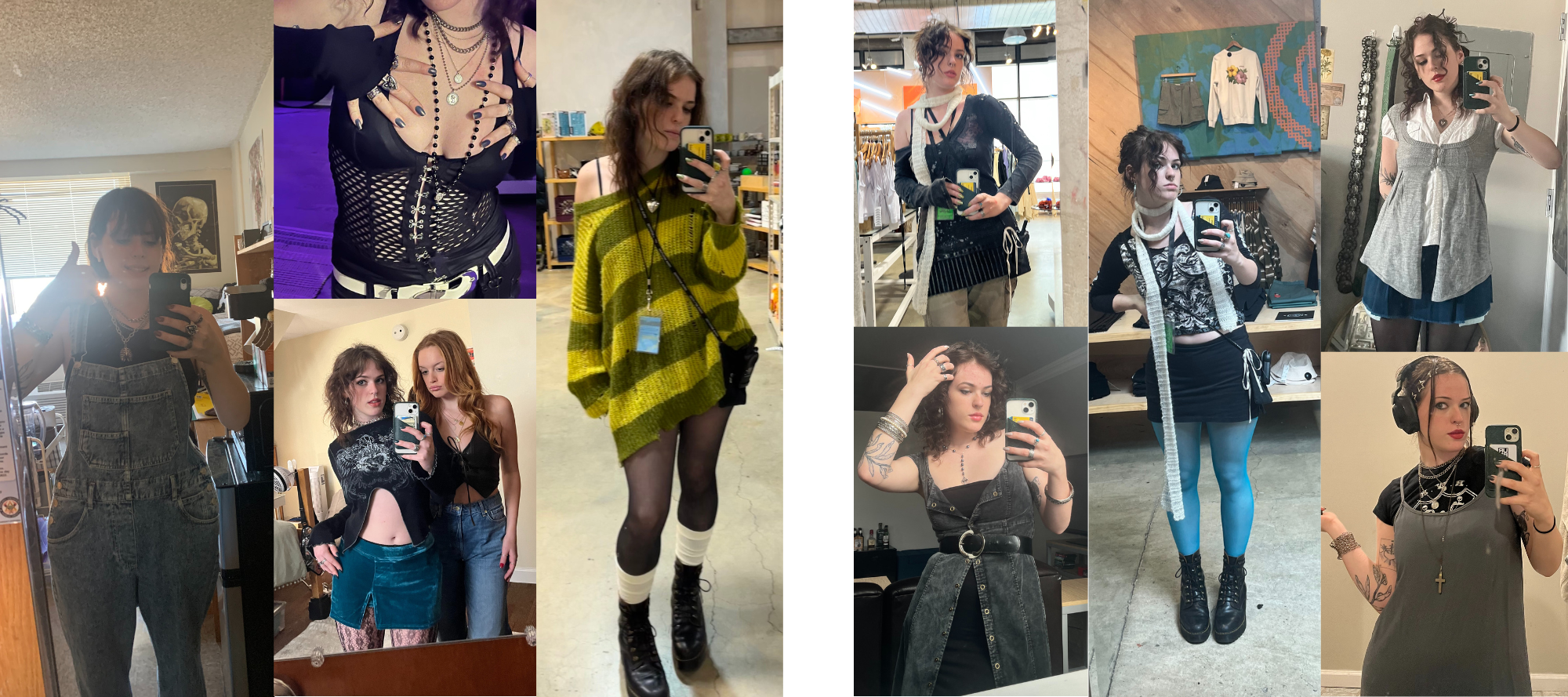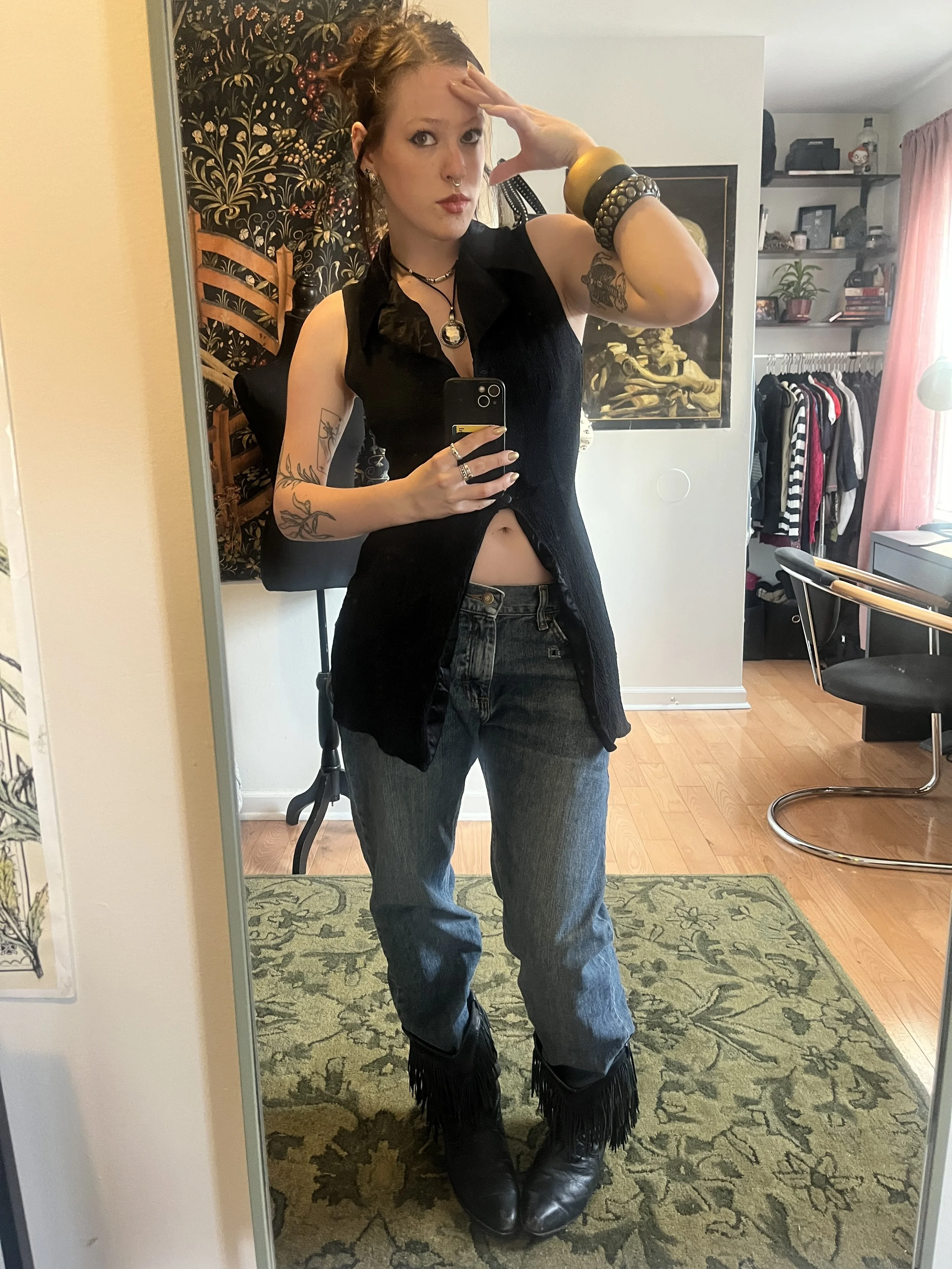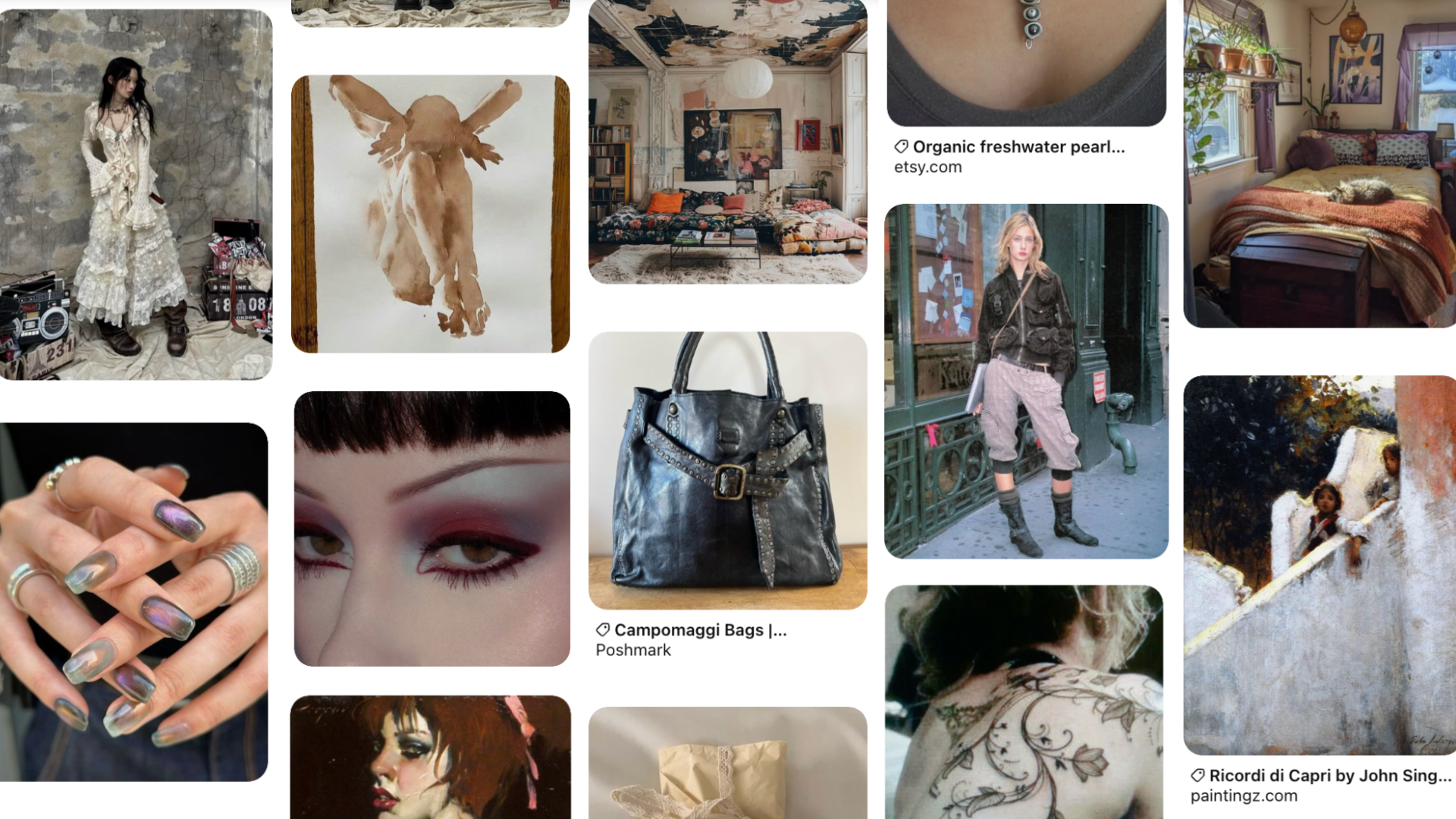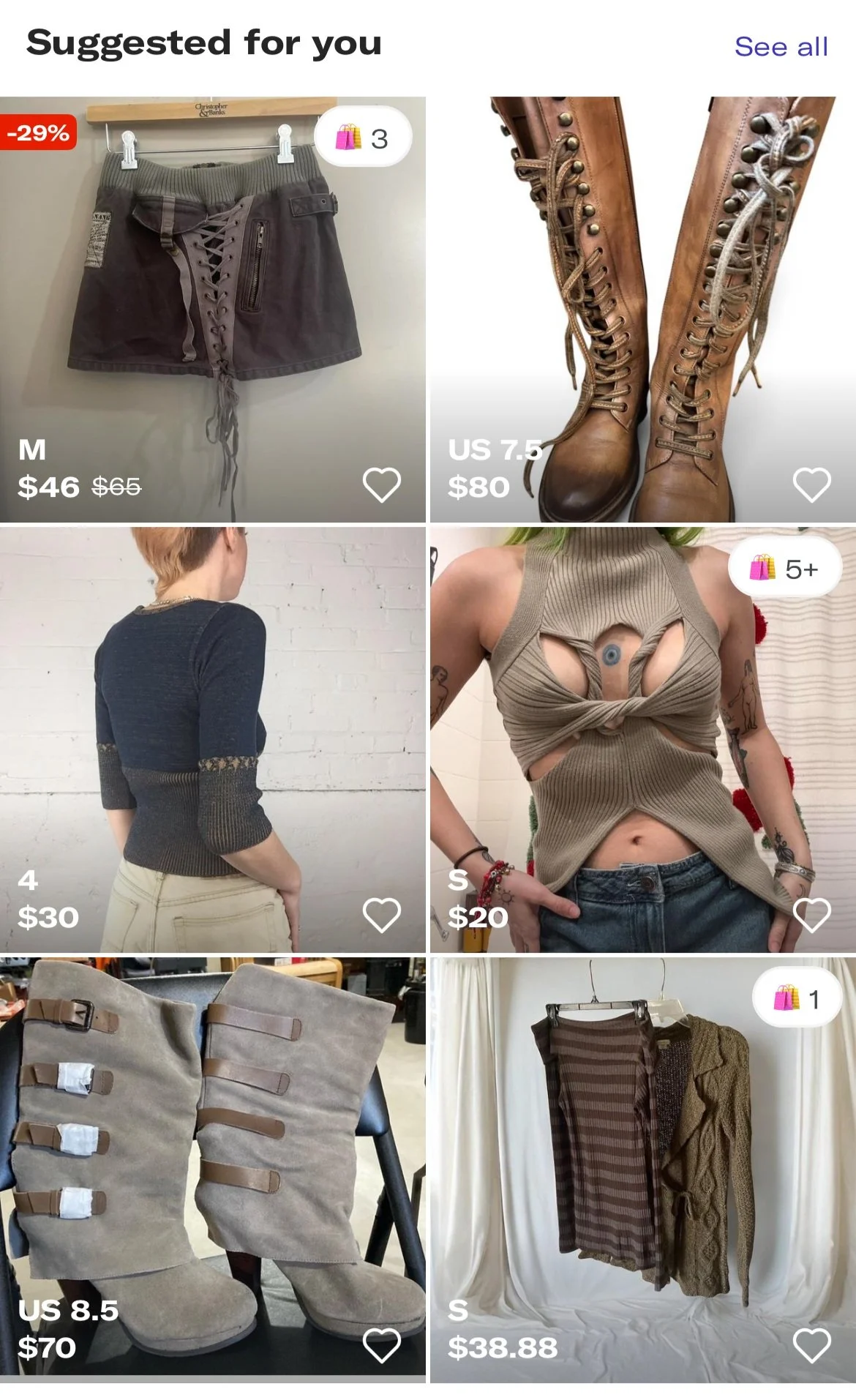The Importance of Personal Style and How to Find Yours
Photographer: Molly McCabe
“How much do people really think about the clothes they wear? For lots of people the answer would be almost none. For others, however, their wardrobe choices are often the thing that keeps them up at night. I am one of those people. It is this life-long obsession that has allowed me to instantly get a glimpse into a person’s life simply by looking at their outfit.”
-My college essay, 2020
The year was 2020. Everyone was still making whipped coffee and playing Among Us, and I was starting my senior year of high school on Zoom. At the time, I was working at a resale and consignment store called Uptown Cheapskate and quickly realized I wanted to work in fashion for the rest of my life. So, when it came time to write my college essay, freshly 18-year-old Sadie decided, what’s a better way to get me into fashion school than to write about how you “can tell everything you need to know about a person from their closet”? The essay itself was far from groundbreaking, but the common thread has become increasingly relevant to me in the years after writing it: the importance of personal style. It is now 2025, and I am just months from graduating with a degree in Fashion Industry and Merchandising. In the time between starting at Drexel and now, I co-oped at URBN as an assistant stylist, single-handedly operated a second-hand store, and am currently working on my senior project about styling, not to mention also being the art director for this magazine. In that time, I also went on one wild ride of a personal style journey.
Understanding Personal Style
So, what exactly is personal style? Many people have different definitions -- some believe that style can only be dressing to the nines every day, while others believe it is how you want to look, not how you actually do. To me, our style doesn't just come from outfits; it is an expression of self that goes beyond the clothes we wear and touches all facets of our lives. Creative choices like room decor, bumper stickers, make-up, nails, and even your lock screen express personal style. Everyone has a personal style, yet some of us have explored and experimented more than others in hopes of developing one that feels truly personal. The deeper you explore your interests, the more you can express them externally and internally. When I leaned into my love for horror movies, for instance, I found myself buying posters and stickers so I could feel my favorite characters with me.
With the recent surge of micro-trends driven by TikTok and fast-fashion brands like Shein, many people my age don’t feel the need to develop their personal style but instead follow trends. While this approach to style may be an accessible and, at times, a fun, quick fix, developing your style is not only more sustainable and cost-effective but can help you better understand yourself. As a fashion major, I know many people who go full throttle into their personal style; Delaney Gruver and her obsession with glitter and Y2K aesthetics instantly came to mind. Articles like Mia Hamilton’s “Westphal Wardrobes” showcasing the variety of individuals' closets and Audrey Kingree’s article “1 Vest, 10 Styles” about the versatility of styling are great explorations into personal style and the people who embody it.
My Style Journey
My style journey has been a rocky one, but without the bold and risky fashion choices I made, I wouldn’t be as comfortable with my style as I am today. I have always loved fashion. For most of my childhood, I was the classic girly girl, wearing princess dresses, tiaras, and all. That was until middle school when I started experimenting with my outfits. I even met my now best friend after a middle school fight over campaigning for “best dressed.” Throughout my four years in high school, I tried out just about every style, from streetwear to boho to edgy and everywhere in between.
My cringey high school style evolution
But it wasn’t until I worked at Uptown Cheapskate and constantly saw different types of clothes and people in various styles that I started searching for where I fit in. Suddenly, I was familiarizing myself with designer brands and learning what high-quality clothing felt like. Every day, I interacted with pieces I otherwise would never see, like Supreme t-shirts, clothing from Korea or Paris, vintage Gap, DKNY, and more. This led me to start exclusively buying clothes in styles I felt drawn to, ignoring brands and trends.
So, when I started in Drexel’s Fashion Industry and Merchandising program, confident in my developing style, I was a bit culture-shocked when I went from one of the most experimental people in my school to one of the most boring. My classmates were more adventurous, trendier, and chic. I tried to stick to my style, but eventually, the style of everyone around me crept in, and I found myself buying things I would never usually wear, like cargo pants and wrap tops. In my mid-sophomore year, after a financial crisis, I realized I had become the person I was writing about in that 2020 essay. So, I 180ed my fashion. I took the time to understand my clothes and why I was drawn to them and started to style them in ways that felt like me while gathering inspiration from the same movies and TV shows I watched during that initial high school style breakthrough. I got rid of all the obligatory tiny tops I felt I had to wear as a college girl, the weird mesh pieces I bought because they were on sale, and the denim maxi skirts and leg warmers I collected because I liked how my friends looked in them. Instead, I started layering dresses over dresses, wore tops backward, and embraced accessories (see below for how obsessed I was with that skinny white scarf for a while). I looked for trends and styling inspiration that I liked and tried not to care whether people around me were wearing them, like bright blue tights and loud lipstick.
It wasn’t until I took that step that I started feeling more confident and more like myself every day again. Through the rest of sophomore year, my study abroad, junior year, and my co-op, I took risks, wore things I would never wear today, like men's neckties and popcorn pants, and slowly discovered what I felt comfortable and confident in. I started to understand what colors I liked best on me and how much skin I felt comfortable showing. I built a closet full of pieces I love.
Freshman and beginning of Sophomore year vs. Mid-sophomore year to Junior year
This brings us to today. I look at my closet, and everything feels like me and comfortable on my body. I never feel embarrassed when I walk out of the house in experimental layering or a risky pair of shoes anymore. I also never feel like I have to dress up for the sake of perception—I dress to feel like me, and that is what I believe personal style truly is.
Shopping for Trends vs. for Self
“Most people who appreciate fashion love to stay on top of trends, but how far they go to follow these trends can tell you a great deal about that person. I say this because as clothes go in and out of style, so do body types, so whether or not they are able to move past certain trends and wear what is right for their body and personality while still staying modern and chic can display what they value more, trends or style.”
- My college essay, 2020
This statement still rings true today. When shopping, most people are either thinking about what is trending at the moment, their personal style, or a combination of the two. When I worked at Uptown Cheapskate in high school, I realized how many people shop purely for trends when I would sift through 30 pieces of Shein clothing rife with micro-trends. But don’t get me wrong -- shopping trends is not a sin. Just make sure you buy them if you see yourself wearing them when no one else is. When I see people wearing patchwork jeans and cow print sweater vests now, I know it’s not because of the popular 2020 trend but because they love the pieces.
What I meant when mentioning body types is that no one can ever fully fit perfectly into trends because bodies trend just like clothes. Think about the Kardashians, adding and removing implants and injections to better fit society's current obsession, something utterly unrealistic for the rest of us. It is much better to understand what fits your body and shop accordingly than to change it to fit trends.
The Benefits of Developing Personal Style
One benefit I have found from developing my style is that I am much better off financially. I go months without buying new clothes and instead use the time to find new ways to wear the clothes I already own. A couple of easy ways to do this are:
I love the way men's jeans fit on me and pairing them with a tailored top is a fun juxtaposition.
Wear a skirt as a top, or try some wild layering. Playing with texture is a fun way to make an outfit more interesting.
Play with pattern mixing. Just trust your instincts on this one.
Experiment outside of your gender. Men can look fantastic in women's jeans, and women can pull off an oversized jacket super well! So, borrow from your family and friends.
Many people like to follow a scoring system. Think of basics and accessories as 1 point and statement pieces as 2 points, and try to make it to at least 6-8 points.
“Start with simplicity in your wardrobe and build around that” says Nuuly Styling Director Amber Rapier, “I find that’s helped me develop a brand that I myself and people know me best for. Build a capsule wardrobe and find those staples you want to wear all the time!”
Quality over quantity cannot be overstated in this situation. I will forever preach that a well-constructed garment you love will stay with you for years, while that super trendy piece that’s “such a good deal” could fall apart in the wash before the trend even has time to die. I try to only shop for new clothes when I have gotten rid of a couple of pieces recently, partially to save money but also to avoid overcrowding my closet. This is something people often overlook -- chances are, if you can’t see it, you won’t wear it. It is also important to never feel shame in wearing the same pieces repeatedly. This mentality is where micro-trends come from; just because TV show characters and celebrities never repeat outfits doesn’t mean you can’t. Clothes are meant to be worn and re-worn, so wear your clothes!
That said, sell, donate, or consign the clothes you don’t wear. I know it can be scary to think you might miss those clothes, but trust me, once you start, it will get easier to say goodbye. Many people have different methods for cleaning out their closet; Isabelle Dunham details an excellent method for a complete clean-out in her article “How To Be an Outfit Repeater.” I use my Depop as motivation to look through my closet, pick out a few things I never reach for, and then take the time to make outfits with them. If I struggle to make outfits I would actually wear, I post them to my Depop. If they don’t sell on Depop, I take them to Buffalo Exchange, and if they don’t want them, they go to the thrift store. Yes, this is a complicated process, but it allows for the highest return on my investment, making it easier to justify getting rid of clothes that I spent my money on.
Similarly, developing your personal style is a great way to maintain a sustainable mindset towards fashion. Many people think that sustainable fashion is only for the rich. If you can’t afford Reformation or Nudie Jeans, your only option is Shein. Sustainable fashion habits do not just mean buying clothes made from bamboo or cactus or spending hundreds on pieces made with a low carbon footprint. Shopping for clothes sustainably can simply mean being more thoughtful about the pieces you buy and treating them with care. Maybe even learn the basics of sewing and laundry to mend ripped and stained clothing. Buying clothing you feel comfortable in, that you can see working with other pieces from your closet, and that excites you is the easiest way to shop sustainably. It’s not just about the environment but also about what is sustainable for your lifestyle.
To maintain a sustainable mindset when shopping, don't buy it if you find yourself saying these:
“Oh, this fits everywhere but my thighs”
“I have no idea where I’ll wear it”
“Idk if I love it, but I love people who can pull it off.”
“Is this going to fall apart after 10 washes?”
“I have something like it, but this one is better” (or get rid of the other one right away)
Money and environment aside, developing your personal style can benefit your life and understanding of yourself. Previous editor-in-chief, and my good friend Kyd Kacani commented that his style “helped a lot with [his] queer identity,” which I have seen happen with a lot of my queer friends. There are many stereotypes when it comes to queer fashion, and playing around with each of them is the best way to know which one you like. Exploring sexuality through fashion can be the easiest way to discover where you fit into the community and understand your boundaries. Current editor-in-Chief Hannah Brong said she finds “always experimenting with style keeps me mentally motivated and optimistic,” and I completely agree. Wearing an outfit I feel confident in can give me the push I need to go about my day. As graphic designer Ava Lorenzen says, “Personal style is such an important part of feeling like yourself,” and I couldn’t agree more.
How to Develop Your Personal Style
It will take time. I cannot deny that. Trial and error are a crucial part of the process. College is the perfect time to start that process; as my friend Lily said, “I have loved college, as I have been able to gain the confidence to wear the pieces I really want to, unlike in high school where I felt more pressure to conform.” It takes guts to step out in that risky outfit, but it is a vital step in your personal style development. I can remember many times over the years when I loved my outfit at home but then spent the whole day feeling crazy for wearing it, like when I wore 7-inch platforms to class or Cindy Lou Who braids to work. Trust me, that feeling goes away. Try not to worry about what other people think. When I see someone wearing a bold outfit, I give them their props, even if I don’t love the ensemble, because I can tell that they are on their way to a developed personal style, and I know first-hand the bravery required to do so.
A good place to start in this process is finding what colors work best on you. While many individuals may think you must base it on your skin tone, "season," or even your zodiac sign, I disagree. Finding your colors is about what you gravitate towards and what feels like you. The best thing about my closet is that everything sticks to a color scheme, which makes everything work together. This is a result of both conscious and subconscious decisions. I tend to lean away from white because I am very clumsy and WILL spill something on white clothes. I avoid loud colors like hot pink and lime green because they don’t go with any of my other clothes, and I rarely wear pastels or pink because they never feel like me. Black, grey, purple, brown, and green feel the most like me, so I subconsciously gravitate towards those colors. If I am shopping and find something red or yellow that I love, I will force myself to think of at least two outfits I could make with them using things I already own.
This is an easy way to start thinking about your unique style. Go to your closet, pick out the four or five colors you see the most, and lean into those colors next time you're shopping.
Another thing you can do to start understanding your style better is simple: Pinterest. Just start playing around on the platform -- put on music or a show and tune out, pinning things you like and organizing them into boards. Don’t limit yourself to outfit inspo, as Pinterest is great at curating a feed specific to all your interests. So, pin away; art, haircuts, lamps, anything and everything that strikes a chord in you. Over time, the Pinterest algorithm will understand your overall personal style, and your feed will allow you to visualize your personalized aesthetic easily.
My Pinterest feed
My Depop Recommended
Pinterest is still the first place I go when I am struggling to piece together an outfit, and it has given me inspiration for some of my all-time favorite fashion choices. Even the professional stylists I met on co-op can be seen scrolling through Pinterest during their lunch break.
Depop is very similar in that regard. Spending time on Depop is excellent if you have difficulty finding things when thrifting. Spend some time scrolling and saving pieces, and you will better understand what to look for when you go to a thrift store. It is beginner-friendly and even lets you search for items by aesthetic, like cottage-core or emo. Pay attention to not only what clothes are recommended but how people style them. If you like it, save it. One thing I love about Depop is that it saves your sizes and will only recommend items in your size or similar sizes.
“So, the next time you are going through your closet to pick out an outfit, or simply throwing on the first clean thing you see, I encourage you to stop and consider what your closet says about you. The clothes you wear can be the best way to express yourself and can send a message to other people about who you are and what is important to you.”
- My college essay
My love for fashion is what drove me through all the challenging moments of my style journey, so if you are someone who loves fashion, I strongly urge you to put your personal style to the test. When people tell me they are shopping or scrolling online and come across something “so Sadie,” it makes me feel like I have made it. Like all my work paid off, so I could find my authentic personal style. But who’s to say where my style will be in 5 or 20 years? Maybe I will be cringing just as hard as I am at those high school pictures. But even though I cringe, I am proud of myself for exploring what I love because fashion has always felt like home to me.











